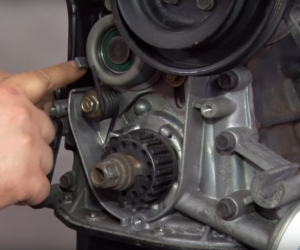Huge amount of secondhand cars, which were imported to Poland, may be followed by development of companies which specialize in distribution of auto parts. This theory is approved by fast rate of changes which occurs at the Polish automotive market. In fact, the situation is not so clear.
The extensive MotoFocus report contains lots of useful information concerning distribution of auto parts. This report has been prepared for the companies working in automotive market. The research concerns shops and workshops in motorization branch all over Poland. Click MORE.
This research encloses differences which appear between individual distributors (it contains the SWOT analyses, time indispensable to deliver parts to shops and workshops, turnovers’ size in disposition between shops and between workshops and preferences with expectations about clients as well). The strengths and weaknesses are shown in various categories at the scale from 1 up to 6 points.
All the research is gathered in 40 tables and 22 graphs each with description of the most important elements.
The research contains many “cross-opinions” which means opinions influenced by different criteria and by different preferences of distributors.
There is an additional possibility of improving this research with more “cross-opinions”.
You can order it in an english version. The price of a single License for „The distribution of auto parts” report is 775 EUR. If you are intersted in purchasing of this report, please e-mail us on alfred@motofocus.pl If you need some additional informations, please call: Alfred Franke +48 22 489-72-21
The main themes of this report have been included in the chapters listed below:
1. INTRODUCTION
2. DESCRIPTION OF COMPANIES INCLUDED
The sample’s structure, regional disposition (tab.0, 1, graph.1)
3. BEHAVIOR ANALYSES (CRITERIONS FOR SUPPLIER CHOICE)
(tab.2 – 7, graph.2 – 7)
3.1 Choice criteria – everybody’s opinion, one indication
3.2 Choice criteria – workshops with shops, shops individually, one indication
3.3 Choice criteria – leaders (best workshops and shops), one indication
3.4 Choice criteria – everybody’s opinion, three indications
3.5 Choice criteria – workshops with shops and shops individually, three indications
3.6 Choice criteria – leaders (best workshops and shops), three indications
4. DISTRIBUTIVE CANALS
(tab.8 – 13, graph.8, 9)
4.1 The most important supplier indication (individually) – everybody’s opinion and comparatively another voting groups
4.2 The most important supplier indication (buying groups) – everybody’s opinion and comparatively another voting groups
4.3 Second and third supplier indication (individually) – everybody’s opinion and comparatively another voting groups
4.4 Second and third supplier indication (buying groups) – everybody’s opinion and comparatively another voting groups
4.5 Comparison of first, second and third supplier indication (buying groups) – everybody’s opinion
5. SUPPLIER EFFIGY – STRENGHTS AND WEAKNESSES
(tab.14 – 29, graph. 10 – 15)
5.1 The most important supplier’s effigy (individually and average) – everybody’s opinion in 7 categories
5.2 The most important supplier’s effigy (buying groups and average) – everybody’s opinion in 7 categories
5.3 Weighted average result of the most important supplier in all categories
5.4 The most important supplier’s effigy (buying groups) – workshops’ and shops’ opinion in 7 categories
5.5 The most important supplier’s effigy (average) – everybody’s, workshops’ and shops’ opinion in 7 categories
5.6 Second and third supplier effigy (individually and average) – everybody’s opinion in 7 categories
5.7 Second and third supplier effigy (buying groups and average) – everybody’s opinion in 7 categories
5.8 Weighted average result of second and third supplier in 7 categories
5.9 Comparison of average weighted average results in various categories
6. VALUATION OF PARTICULAR SUPPLIERS’ DEPARTAMENTS
(tab.30, 31, graph.16)
6.1 Departments’ valuation – individually and average
7. TURNOVERS’ DISPOSITION
(tab.32 – 35, graph.17 – 20)
7.1 Turnover’s size in disposition – all together and by company’s type
7.2 Turnover’s disposition in percent along with suppliers – all together and leaders
7.3 Turnover’s disposition in percent along with supplier
8. TIME INDISPENSABLE OF DELIVERY
(tab.36, 37, graph.21)
8.1 Time indispensable of delivery (efficiency of distribution – individually) – all together
9. PROBLEMATIC AREA BETWEEN SUPPLIER AND CLIENT
(tab.36 – 39, graph.22)
9.1 General and detailed classification
10. SOURCES OF SUPPLY COMBINATIONS OCCURING MOST OFTEN
10.1 The most popular combinations of distributors fulfilling each other






Komentarze